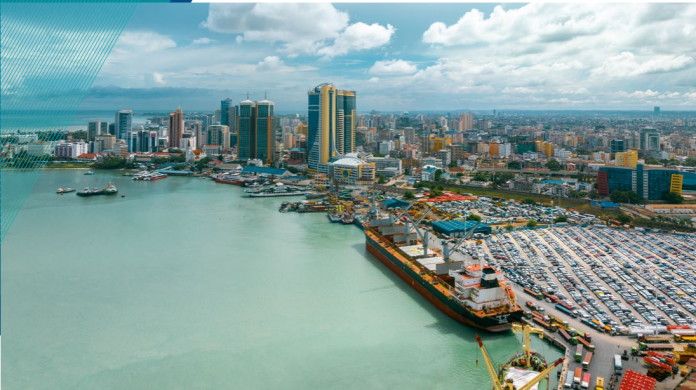East Africa’s ports are entering a new era of competition and cooperation, as Kenya, Tanzania, and Djibouti accelerate investments to secure their share of regional and global trade. The contest, centered around infrastructure, efficiency, and connectivity, will determine who controls the flow of goods between Africa’s interior markets and the world’s busiest sea lanes.
Kenya’s Port of Mombasa, long regarded as the anchor of East African maritime trade, faces growing competition. For decades, it has been the gateway for landlocked economies such as Uganda, Rwanda, and South Sudan, handling nearly 35 million tonnes of cargo annually. Yet, the rise of modern facilities in Tanzania and Djibouti, backed by billions in foreign investment, is reshaping regional logistics. The result is a maritime race that could redefine the economic geography of East Africa.
Read also: Senegal’s $900 million ‘Pink Lake’ housing project sparks local opposition over environmental risks
Djibouti, strategically perched on the Bab el-Mandeb Strait, the maritime chokepoint linking the Red Sea and Indian Ocean, has consolidated its status as a gateway for the Horn of Africa. The Doraleh Multi-Purpose Port, built with heavy Chinese investment, can handle up to 8.2 million tonnes of cargo annually, serving as Ethiopia’s main import-export lifeline. With a water depth of 15.3 meters and specialized handling systems for bulk, container, and vehicle cargo, Doraleh offers capabilities few regional ports can match. Its proximity to key shipping lanes positions Djibouti as a potential rival to Egypt’s Suez Canal corridor for transshipment traffic into Africa’s interior.
Tanzania, meanwhile, is turning Dar es Salaam into a high-tech logistics hub. A $250 million investment deal with Dubai-based DP World, signed in 2023 under a 30-year concession, has already yielded results. Upgraded information systems, deeper berths, and modern cranes have cut vessel turnaround times from an average of five days to just two. Container throughput has surged, jumping from 7,151 units in April 2024 to over 20,000 by July, a 182% increase within three months. The Tanzania Ports Authority (TPA) reported that overall transit cargo rose nearly 20% year-on-year in 2024, signaling that the reforms are translating into measurable growth.
This momentum is also redrawing trade patterns. Dar es Salaam is now attracting cargo from Zambia, Malawi, and the Democratic Republic of Congo, markets traditionally reliant on Mombasa. For Tanzania, the upgrades are part of a wider national logistics strategy that includes road and rail corridors like the Central Line and the Standard Gauge Railway, linking port activity directly to inland industrial zones.
Read also: Africa calls on G20 to match climate ambition with equity, finance, and policy space
Kenya, however, remains far from conceding its lead. The Port of Mombasa still processes more than double the container volume of Dar es Salaam and far outpaces Djibouti in overall tonnage. Its long-established clearance systems, institutional capacity, and inland connectivity give it an advantage. In addition, Kenya has been courting private investors to modernize both Mombasa and the newer Lamu Port, part of the LAPSSET Corridor, a flagship infrastructure project designed to link Kenya to Ethiopia and South Sudan. Though a proposal to lease sections of the two ports for investment was suspended in 2023, the government continues to explore bond-financing and concession models to maintain competitiveness.
Analysts view this competition as both inevitable and beneficial. “Healthy rivalry in the maritime sector can stimulate efficiency, attract capital, and expand trade across borders,” says one policy expert from the African Center for Economic Transformation. The region’s combined efforts are expected to enhance Africa’s global shipping profile, particularly as the African Continental Free Trade Area (AfCFTA) begins to harmonize customs and trade procedures across member states.
Read also: Ethiopia secures United States backing for $10 Billion Bishoftu International Airport project
At stake is not just port dominance, but the structure of East Africa’s future economy. Maritime infrastructure underpins nearly 90% of the region’s external trade by volume, and with intra-African commerce projected to grow by 50% over the next decade, the region’s ports must prepare for unprecedented throughput. The key challenge will be balancing speed and scale with sustainability, ensuring that expansions integrate clean energy systems, waste management, and resilience against sea-level rise.
If current projects stay on track, East Africa could emerge as one of the world’s most dynamic maritime corridors, anchored by three ports that are less rivals than interconnected nodes in a growing African trade network. What matters now is coordination: aligning investments in ports with regional transport networks, energy grids, and customs regimes to convert maritime modernization into inclusive economic transformation.
Source: Forbes Africa
Follow us on LinkedIn: Africa Sustainability Matters






